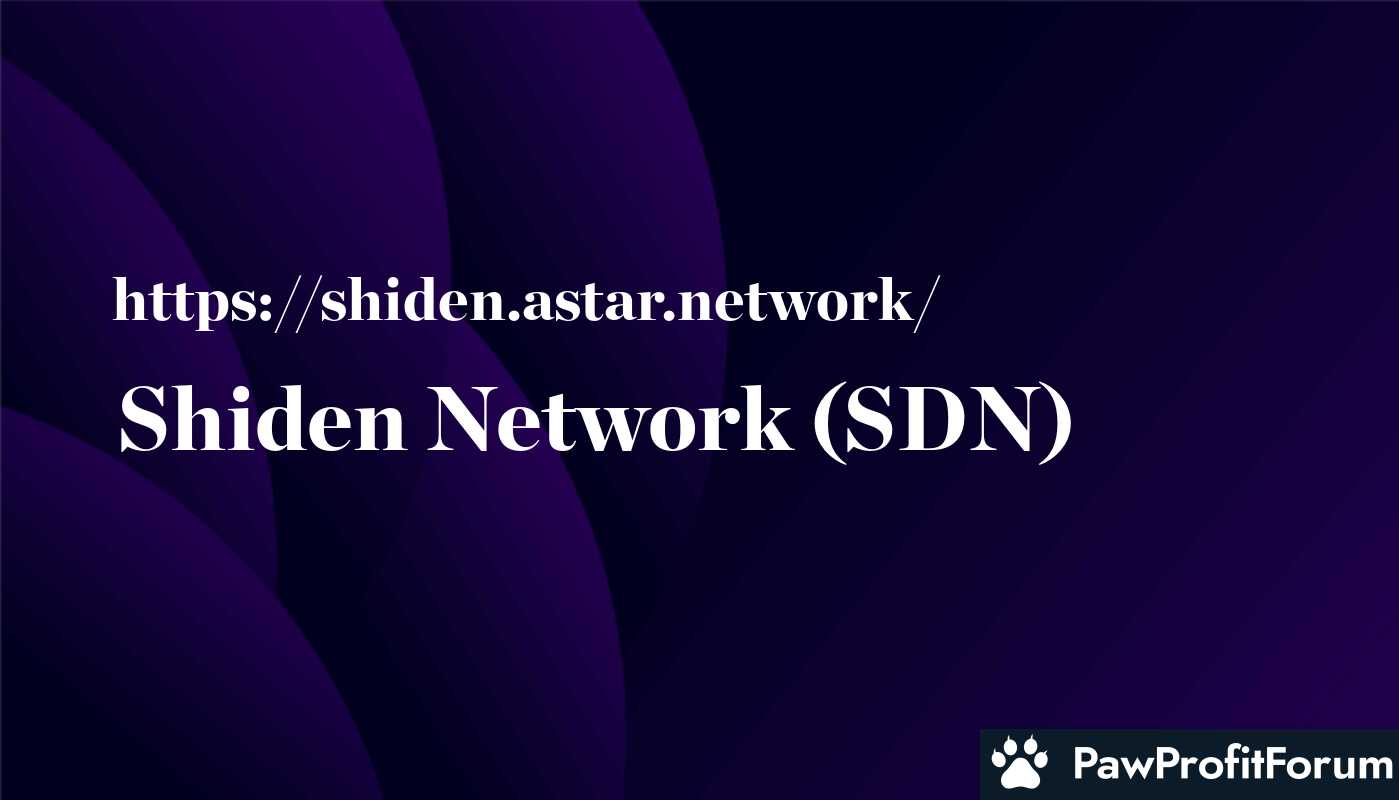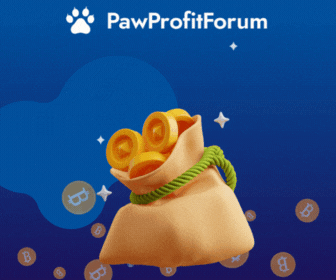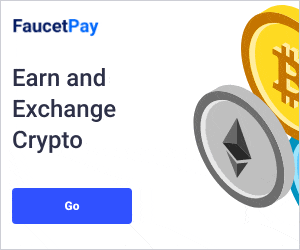Shiden Network is a multi-chain decentralized application layer on Kusama Network. Kusama Relaychain does not support smart contract functionality by design - Kusama Network needs a smart contract layer. This is where Shiden Network comes in. Shiden supports Ethereum Virtual Machine, WebAssembly, and Layer2 solutions from day one. The platform supports various applications like DeFi, NFTs and more.
The platform's integration with Kusama allows it to leverage Kusama's robust infrastructure while providing a specialized environment for decentralized applications. Shiden Network is often referred to as the "canary network for the future of smart contracts," highlighting its role in testing and refining innovations before they are deployed on more stable networks.
Shiden's utility token, SDN, plays a vital role in the ecosystem, facilitating transactions, governance, and staking. The network's strong community presence on platforms like Twitter and Discord further underscores its active and engaged user base.
Supporting multiple blockchain protocols, Shiden Network ensures interoperability and scalability, crucial for the evolving landscape of decentralized applications. Its support for EVM and WebAssembly allows developers to deploy a wide array of smart contracts, enhancing the platform's flexibility and utility.
In addition to its technical capabilities, Shiden Network's focus on Layer2 solutions addresses scalability issues, making it a forward-thinking choice for developers and users alike. The network's emphasis on multi-chain compatibility ensures that it remains adaptable and relevant in the rapidly changing blockchain environment.
One of the core technologies behind Shiden Network is its support for the Ethereum Virtual Machine (EVM). EVM allows developers to write and deploy smart contracts using Solidity, a programming language familiar to those who have worked with Ethereum. This compatibility ensures that developers can easily migrate their existing Ethereum-based dApps to Shiden without having to rewrite significant portions of their code.
In addition to EVM, Shiden Network also supports WebAssembly (Wasm). Wasm is a binary instruction format that enables high-performance execution of code in web browsers and other environments. By supporting Wasm, Shiden Network allows developers to write smart contracts in multiple programming languages, such as Rust, C, and C++. This flexibility opens the door for a broader range of developers to create and deploy dApps on the network.
Layer2 solutions are another critical aspect of Shiden Network's technology. Layer2 solutions are designed to improve the scalability and efficiency of blockchain networks by handling transactions off the main chain (Layer1) and then settling them on the main chain. This approach reduces congestion and lowers transaction fees, making it more feasible for dApps to operate at scale. Shiden Network's support for Layer2 solutions ensures that it can handle a high volume of transactions without compromising on speed or security.
Security is a paramount concern for any blockchain network, and Shiden Network employs several mechanisms to prevent attacks from bad actors. One such mechanism is the use of a decentralized consensus algorithm, which ensures that no single entity has control over the network. This decentralized approach makes it extremely difficult for malicious actors to manipulate the blockchain or execute attacks such as double-spending.
Another layer of security comes from the Kusama Network itself, which serves as a testing ground for new features and technologies before they are deployed on the more stable Polkadot Network. By leveraging Kusama's experimental environment, Shiden Network can implement and test innovative solutions in a real-world setting, ensuring that they are secure and reliable before wider adoption.
Shiden Network also supports various applications, including decentralized finance (DeFi) and non-fungible tokens (NFTs). DeFi applications enable users to engage in financial activities such as lending, borrowing, and trading without relying on traditional financial institutions. NFTs, on the other hand, represent unique digital assets that can be used in various contexts, from digital art to virtual real estate. The versatility of Shiden Network in supporting these diverse applications makes it a valuable platform for developers and users alike.
The network's governance model further enhances its robustness. Shiden Network employs a decentralized governance system where token holders can propose and vote on changes to the network. This democratic approach ensures that the community has a say in the network's development and direction, fostering a sense of ownership and collaboration among its participants.
Shiden Network's integration with the Kusama ecosystem allows it to benefit from Kusama's interoperability features. Kusama is designed to facilitate communication and interaction between different blockchains, enabling Shiden Network to interact seamlessly with other projects within the Kusama and Polkadot ecosystems. This interoperability enhances the utility and reach of dApps deployed on Shiden Network, making them accessible to a broader audience.
The technology behind Shiden Network is a blend of advanced blockchain solutions designed to provide a scalable, secure, and versatile platform for decentralized applications. By supporting EVM, Wasm, and Layer2 solutions, and leveraging the Kusama Network's experimental environment, Shiden Network offers a comprehensive and robust infrastructure for the next generation of dApps.
One of the primary real-world applications of Shiden Network is its support for decentralized finance (DeFi). DeFi applications enable financial services like lending, borrowing, and trading without the need for traditional banks. By leveraging Shiden's compatibility with Ethereum Virtual Machine (EVM) and WebAssembly (WASM), developers can create and deploy DeFi applications that are both efficient and scalable.
In addition to DeFi, Shiden Network also supports non-fungible tokens (NFTs). NFTs are digital assets that represent ownership of unique items, such as art, music, or virtual real estate. Shiden's infrastructure allows for the creation, trading, and management of NFTs, providing a robust platform for artists, gamers, and collectors.
Shiden Network also introduces an innovative feature called DApp staking. This allows developers to earn SDN tokens by creating decentralized applications (DApps). Users can stake their SDN tokens on their favorite DApps, and both the developers and the users receive rewards. This incentivizes the development of high-quality applications and fosters a vibrant ecosystem.
Another significant application is Shiden's support for Layer2 solutions. Layer2 solutions are designed to improve the scalability and efficiency of blockchain networks. By integrating these solutions, Shiden can handle a higher volume of transactions at lower costs, making it more accessible for everyday use.
Furthermore, Shiden Network plays a crucial role in the Kusama ecosystem by providing a smart contract layer. This enables the creation of complex applications that require programmable logic, such as automated market makers and decentralized exchanges.
Shiden Network also offers staking for consensus, where validators and nominators can earn rewards for securing the network. This not only enhances the security of the platform but also provides an incentive for participants to contribute to the network's stability.
By supporting Ethereum compatibility, Shiden Network ensures that developers can easily port their existing Ethereum-based applications to Shiden, broadening the scope of potential applications and fostering interoperability within the blockchain space.
The journey of Shiden Network began with its launch, marking a significant milestone as it introduced a robust multi-chain dApp layer on Kusama. This launch was pivotal, as it laid the foundation for Shiden's role in enhancing the Kusama ecosystem by providing essential smart contract capabilities.
One of the notable developments for Shiden Network was the introduction of dApp staking. This feature allows developers to earn rewards by staking their SDN tokens, incentivizing the creation and maintenance of decentralized applications on the platform. The launch of dApp staking has been instrumental in fostering a vibrant developer community and encouraging innovation within the Shiden ecosystem.
Shiden Network has also made strides in supporting various applications beyond DeFi and NFTs. By enabling compatibility with Ethereum Virtual Machine and WebAssembly, Shiden has positioned itself as a versatile platform capable of hosting a wide array of decentralized applications. This flexibility has attracted a diverse group of developers and projects, further solidifying Shiden's role in the broader blockchain landscape.
Throughout its development, Shiden Network has maintained a focus on interoperability and scalability. The platform's support for Layer2 solutions underscores its commitment to addressing the scalability challenges that often plague blockchain networks. By facilitating faster and more efficient transactions, Shiden enhances the user experience and broadens the potential use cases for its technology.
In addition to its technical advancements, Shiden Network has actively engaged with its community through various initiatives and updates. Regular communication and transparency have been key components of Shiden's strategy, fostering trust and collaboration among its users and stakeholders.
The evolution of Shiden Network reflects its dedication to pushing the boundaries of what is possible within the blockchain space. By continuously innovating and expanding its capabilities, Shiden remains at the forefront of decentralized application development on Kusama, driving the adoption and growth of blockchain technology.
What is Shiden Network?
Shiden Network (SDN) stands as a pioneering multi-chain decentralized application layer on the Kusama Network. Unlike Kusama's Relaychain, which lacks smart contract functionality by design, Shiden fills this crucial gap. It supports Ethereum Virtual Machine (EVM), WebAssembly, and Layer2 solutions from the outset, making it a versatile platform for a wide range of applications, including DeFi and NFTs.The platform's integration with Kusama allows it to leverage Kusama's robust infrastructure while providing a specialized environment for decentralized applications. Shiden Network is often referred to as the "canary network for the future of smart contracts," highlighting its role in testing and refining innovations before they are deployed on more stable networks.
Shiden's utility token, SDN, plays a vital role in the ecosystem, facilitating transactions, governance, and staking. The network's strong community presence on platforms like Twitter and Discord further underscores its active and engaged user base.
Supporting multiple blockchain protocols, Shiden Network ensures interoperability and scalability, crucial for the evolving landscape of decentralized applications. Its support for EVM and WebAssembly allows developers to deploy a wide array of smart contracts, enhancing the platform's flexibility and utility.
In addition to its technical capabilities, Shiden Network's focus on Layer2 solutions addresses scalability issues, making it a forward-thinking choice for developers and users alike. The network's emphasis on multi-chain compatibility ensures that it remains adaptable and relevant in the rapidly changing blockchain environment.
What is the technology behind Shiden Network?
Shiden Network (SDN) stands out as a multi-chain decentralized application layer built on the Kusama Network. Unlike Kusama's Relaychain, which does not support smart contract functionality, Shiden Network fills this gap by providing a robust smart contract layer. This makes it an essential component for developers looking to deploy decentralized applications (dApps) on Kusama.One of the core technologies behind Shiden Network is its support for the Ethereum Virtual Machine (EVM). EVM allows developers to write and deploy smart contracts using Solidity, a programming language familiar to those who have worked with Ethereum. This compatibility ensures that developers can easily migrate their existing Ethereum-based dApps to Shiden without having to rewrite significant portions of their code.
In addition to EVM, Shiden Network also supports WebAssembly (Wasm). Wasm is a binary instruction format that enables high-performance execution of code in web browsers and other environments. By supporting Wasm, Shiden Network allows developers to write smart contracts in multiple programming languages, such as Rust, C, and C++. This flexibility opens the door for a broader range of developers to create and deploy dApps on the network.
Layer2 solutions are another critical aspect of Shiden Network's technology. Layer2 solutions are designed to improve the scalability and efficiency of blockchain networks by handling transactions off the main chain (Layer1) and then settling them on the main chain. This approach reduces congestion and lowers transaction fees, making it more feasible for dApps to operate at scale. Shiden Network's support for Layer2 solutions ensures that it can handle a high volume of transactions without compromising on speed or security.
Security is a paramount concern for any blockchain network, and Shiden Network employs several mechanisms to prevent attacks from bad actors. One such mechanism is the use of a decentralized consensus algorithm, which ensures that no single entity has control over the network. This decentralized approach makes it extremely difficult for malicious actors to manipulate the blockchain or execute attacks such as double-spending.
Another layer of security comes from the Kusama Network itself, which serves as a testing ground for new features and technologies before they are deployed on the more stable Polkadot Network. By leveraging Kusama's experimental environment, Shiden Network can implement and test innovative solutions in a real-world setting, ensuring that they are secure and reliable before wider adoption.
Shiden Network also supports various applications, including decentralized finance (DeFi) and non-fungible tokens (NFTs). DeFi applications enable users to engage in financial activities such as lending, borrowing, and trading without relying on traditional financial institutions. NFTs, on the other hand, represent unique digital assets that can be used in various contexts, from digital art to virtual real estate. The versatility of Shiden Network in supporting these diverse applications makes it a valuable platform for developers and users alike.
The network's governance model further enhances its robustness. Shiden Network employs a decentralized governance system where token holders can propose and vote on changes to the network. This democratic approach ensures that the community has a say in the network's development and direction, fostering a sense of ownership and collaboration among its participants.
Shiden Network's integration with the Kusama ecosystem allows it to benefit from Kusama's interoperability features. Kusama is designed to facilitate communication and interaction between different blockchains, enabling Shiden Network to interact seamlessly with other projects within the Kusama and Polkadot ecosystems. This interoperability enhances the utility and reach of dApps deployed on Shiden Network, making them accessible to a broader audience.
The technology behind Shiden Network is a blend of advanced blockchain solutions designed to provide a scalable, secure, and versatile platform for decentralized applications. By supporting EVM, Wasm, and Layer2 solutions, and leveraging the Kusama Network's experimental environment, Shiden Network offers a comprehensive and robust infrastructure for the next generation of dApps.
What are the real-world applications of Shiden Network?
Shiden Network (SDN) operates as a multi-chain decentralized application layer on the Kusama Network, filling the gap left by Kusama's lack of smart contract functionality. This unique positioning allows Shiden to support a wide array of applications, making it a versatile platform in the blockchain ecosystem.One of the primary real-world applications of Shiden Network is its support for decentralized finance (DeFi). DeFi applications enable financial services like lending, borrowing, and trading without the need for traditional banks. By leveraging Shiden's compatibility with Ethereum Virtual Machine (EVM) and WebAssembly (WASM), developers can create and deploy DeFi applications that are both efficient and scalable.
In addition to DeFi, Shiden Network also supports non-fungible tokens (NFTs). NFTs are digital assets that represent ownership of unique items, such as art, music, or virtual real estate. Shiden's infrastructure allows for the creation, trading, and management of NFTs, providing a robust platform for artists, gamers, and collectors.
Shiden Network also introduces an innovative feature called DApp staking. This allows developers to earn SDN tokens by creating decentralized applications (DApps). Users can stake their SDN tokens on their favorite DApps, and both the developers and the users receive rewards. This incentivizes the development of high-quality applications and fosters a vibrant ecosystem.
Another significant application is Shiden's support for Layer2 solutions. Layer2 solutions are designed to improve the scalability and efficiency of blockchain networks. By integrating these solutions, Shiden can handle a higher volume of transactions at lower costs, making it more accessible for everyday use.
Furthermore, Shiden Network plays a crucial role in the Kusama ecosystem by providing a smart contract layer. This enables the creation of complex applications that require programmable logic, such as automated market makers and decentralized exchanges.
Shiden Network also offers staking for consensus, where validators and nominators can earn rewards for securing the network. This not only enhances the security of the platform but also provides an incentive for participants to contribute to the network's stability.
By supporting Ethereum compatibility, Shiden Network ensures that developers can easily port their existing Ethereum-based applications to Shiden, broadening the scope of potential applications and fostering interoperability within the blockchain space.
What key events have there been for Shiden Network?
Shiden Network (SDN) stands as a multi-chain decentralized application layer on the Kusama Network, addressing the need for smart contract functionality that Kusama Relaychain lacks by design. This innovative platform supports Ethereum Virtual Machine, WebAssembly, and Layer2 solutions from its inception, catering to a diverse range of applications including DeFi and NFTs.The journey of Shiden Network began with its launch, marking a significant milestone as it introduced a robust multi-chain dApp layer on Kusama. This launch was pivotal, as it laid the foundation for Shiden's role in enhancing the Kusama ecosystem by providing essential smart contract capabilities.
One of the notable developments for Shiden Network was the introduction of dApp staking. This feature allows developers to earn rewards by staking their SDN tokens, incentivizing the creation and maintenance of decentralized applications on the platform. The launch of dApp staking has been instrumental in fostering a vibrant developer community and encouraging innovation within the Shiden ecosystem.
Shiden Network has also made strides in supporting various applications beyond DeFi and NFTs. By enabling compatibility with Ethereum Virtual Machine and WebAssembly, Shiden has positioned itself as a versatile platform capable of hosting a wide array of decentralized applications. This flexibility has attracted a diverse group of developers and projects, further solidifying Shiden's role in the broader blockchain landscape.
Throughout its development, Shiden Network has maintained a focus on interoperability and scalability. The platform's support for Layer2 solutions underscores its commitment to addressing the scalability challenges that often plague blockchain networks. By facilitating faster and more efficient transactions, Shiden enhances the user experience and broadens the potential use cases for its technology.
In addition to its technical advancements, Shiden Network has actively engaged with its community through various initiatives and updates. Regular communication and transparency have been key components of Shiden's strategy, fostering trust and collaboration among its users and stakeholders.
The evolution of Shiden Network reflects its dedication to pushing the boundaries of what is possible within the blockchain space. By continuously innovating and expanding its capabilities, Shiden remains at the forefront of decentralized application development on Kusama, driving the adoption and growth of blockchain technology.
Who are the founders of Shiden Network?
Shiden Network (SDN) is a multi-chain decentralized application layer on the Kusama Network, designed to provide smart contract functionality where Kusama Relaychain does not. The main founder and CEO of Shiden Network is Sota Watanabe. Watanabe has played a pivotal role in the creation and development of Shiden Network, leveraging his expertise in blockchain technology to build a platform that supports Ethereum Virtual Machine, WebAssembly, and Layer2 solutions from day one. Additionally, the project benefits from contributions by various team members and a strong community of supporters, emphasizing a collaborative approach to its ongoing success.| Website | shiden.astar.network/ |
| Socials | twitter.com/ShidenNetwork |
| Socials | reddit.com/r/ShidenNetwork |
| Socials | github.com/AstarNetwork |
| Socials | discord.gg/dgtEpw7 |
| Explorers | shiden.subscan.io/ |










